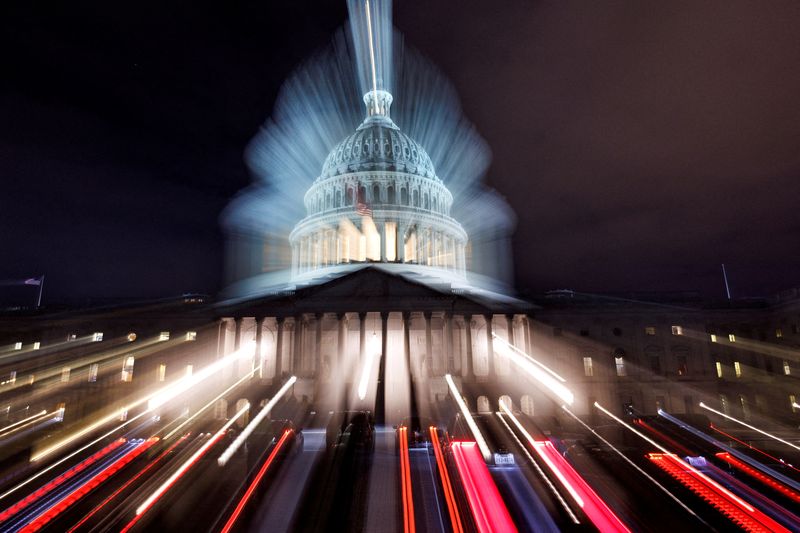(Reuters) - The U.S. federal government is ticking closer to its "x-date," when it will no longer be able to pay its bills and risk a default that would shake the world economy.
Republicans in the House of Representatives have passed legislation that would pair a $1.5 trillion increase in the debt ceiling with $4.8 trillion in spending cuts.
Democratic President Joe Biden has insisted that Congress must pass a "clean" debt ceiling hike, without imposing other conditions.
Lawmakers have done that 29 times since 1978, according to the Congressional Research Service.
But over that period, Congress has paired its debt-ceiling hikes with other legislation 32 times.
CREATION OF THE DEBT CEILING
Congress has always placed restrictions on federal debt as part of its constitutional authority over tax and spending matters.
Before World War One, Congress often handled debt sales directly, but that became impractical as federal borrowing increased in the years that followed.
Congress opted in 1939 to impose an overall limit of $45 billion on government borrowing activity.
Because spending has often outrun tax revenue, Congress has had to raise that limit 102 times since the end of World War Two.
Big spending increases - such as the $6 trillion in COVID-19 relief Congress approved in 2020 and 2021 under Biden and his Republican predecessor, Donald Trump - led to more debt and more frequent debt-ceiling increases.
Most other developed countries do not impose such limits on government borrowing.
TERMS APPLY
Congress has often imposed conditions on these debt-ceiling hikes, or paired them with other tax and spending activity.
Congress delayed a debt-ceiling hike in 1957 to pressure the Pentagon to operate more efficiently, and linked increases to expanded Social Security benefits in the early 1970s. Lawmakers in that era also tried unsuccessfully to use the debt as leverage to stop U.S. bombing of Cambodia.
Often Congress has paired debt-ceiling increases with other budget and spending measures - a practice that allows lawmakers to negotiate on several fiscal matters at once and shields them somewhat from the political pain of approving an increase in debt.
Congress paired a debt-ceiling hike with broader bipartisan spending packages in 2018 and 2019, for example. The recession-fighting stimulus package of 2009 also included a debt-ceiling hike.
The House of Representatives automatically raised the debt ceiling 10 times between 1980 and 2010 when it passed its annual budget plan, under a rule named after Democratic leader Dick Gephardt.
This process does not always go smoothly.
Republicans unsuccessfully tried to pair a debt-ceiling hike with spending cuts in 1995 and 1996, leading to two partial government shutdowns. A similar showdown in 2011 brought the United States to the brink of default and prompted a first-ever downgrade of the United States' top-notch credit rating.
SUSPENDING IT
Congress voted seven times between 2013 and 2019 to suspend the debt ceiling for a set amount of time, rather than raising it. This allowed lawmakers to avoid signing off on a specific amount of additional debt, and provided some certainty by letting them know when they would have to tackle the problem again.
2011 SPENDING RESTRAINTS

The 2011 showdown ended with the Budget Control Act, which imposed spending caps for the following 10 years. Congress abandoned those restraints in the years that followed.
That deal also reversed the usual calculus by allowing the president to raise the debt ceiling unless a majority of Congress voted against it, which they conveniently failed to do.